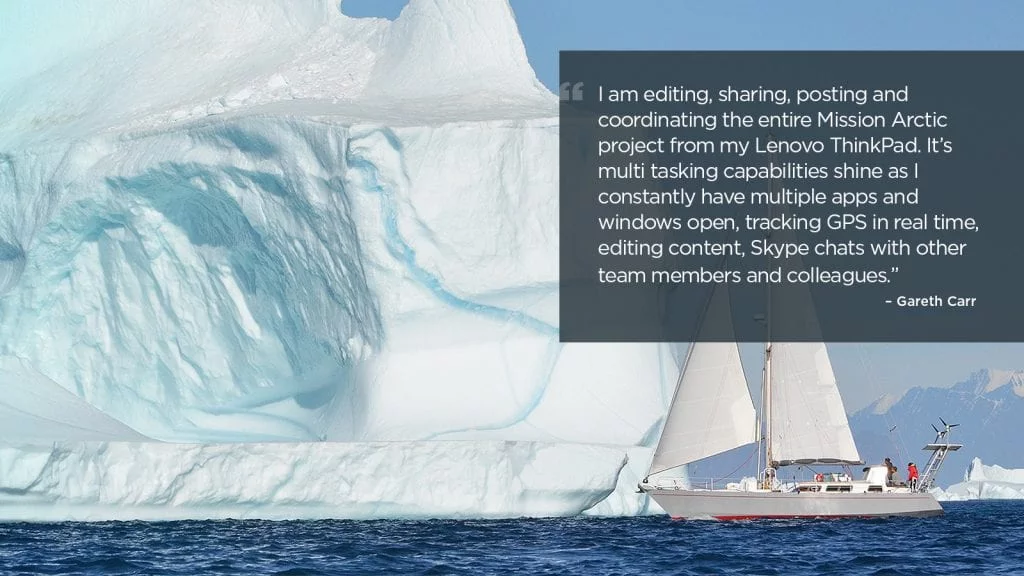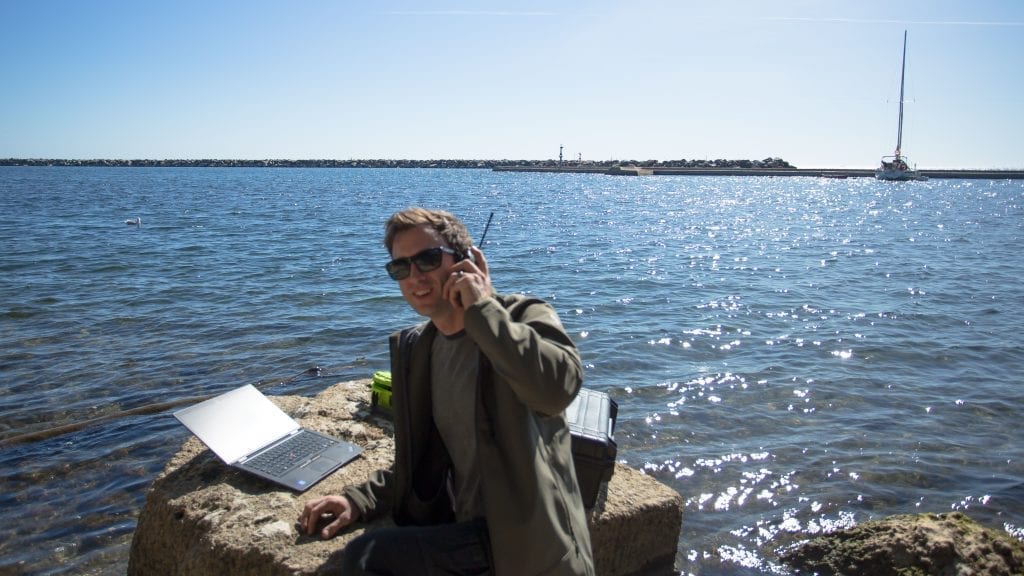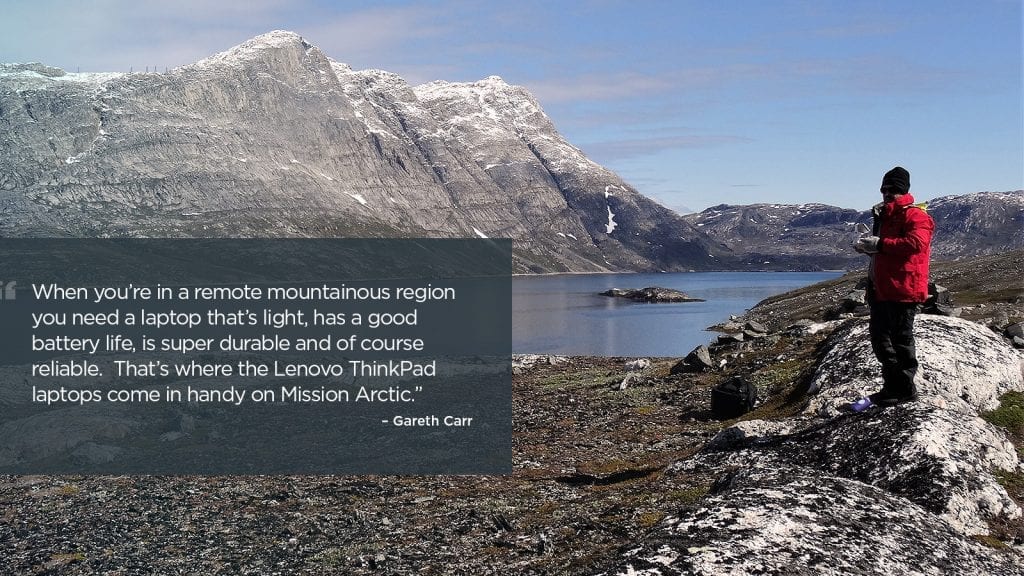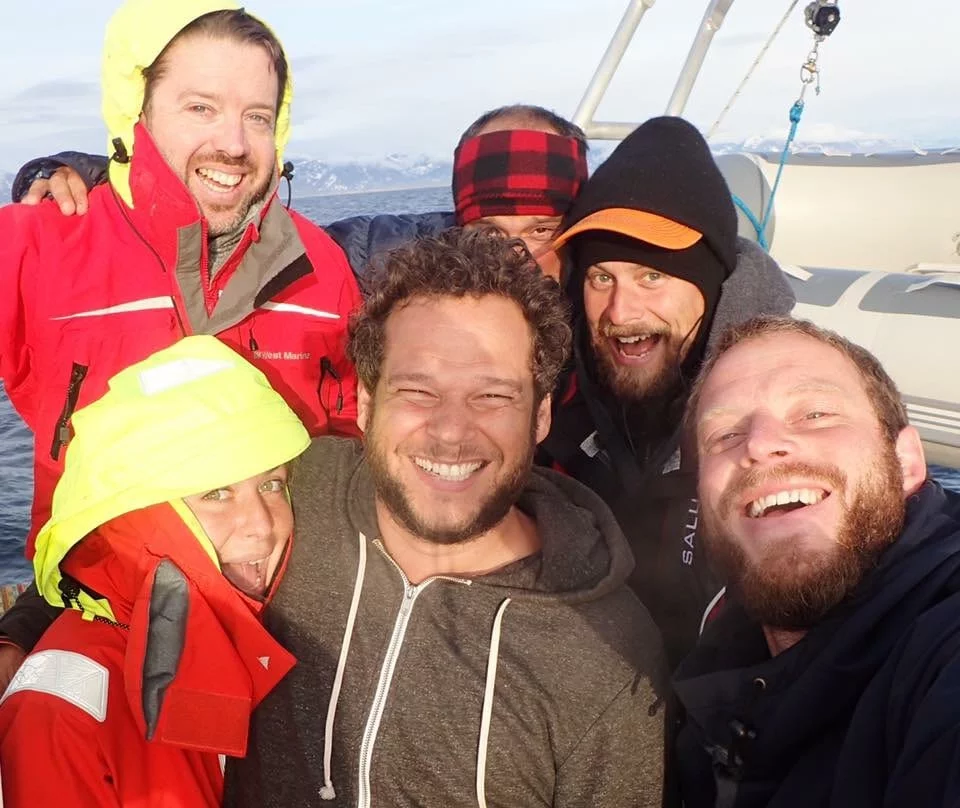Q&A with Gareth Carr, on-the-ground crew member
The Mission Arctic extreme expedition team is safely home from their travels through uncharted Arctic waters, guided by Lenovo Think laptops and tablets. During their time at sea, we posted the first of a series of blog posts spotlighting the crew members of Mission Arctic, sitting down with Nick Peissel to hear about the expedition’s objectives and goals first hand.
Now, we’re sitting down with Gareth Carr, Mission Arctic’s on-the-ground crew member and key coordinator, for his perspective on this recording-breaking journey and his role on the team:
Q: What is Mission Arctic?
Gareth Carr: In addition to all the technical details and overall mission objectives that Nick laid out in the first post, this expedition is unique because everyone involved comes from different walks of life, and have joined the mission because they want to. Each of the adventurers brings his/her special skillset to the team to achieve the mission’s greater goals. As a ground crew member, one of my key roles for the expedition is to make sure background communications and planning stays constant and our audience is kept up-to-date with the mission through social media. My personal goal is to join an expedition in person in the coming years as we pursue more endeavours.

Q: How did you become involved with the expedition? What sparked your interest in becoming a crew member?
GC: Several years ago, a few of the Mission Arctic team members worked on another mission to conduct high altitude glacial research and diving. I joined these efforts as a videographer, diver and metal worker, where I met Nicolas Peissel, Dr. Carlson and Dr. Uly. I continued to work with these individuals on their own missions by providing everything from technical support to photography and logistics. What intrigued me about this particular expedition was the sense of adventure and the prospect of discovering new things it held, in addition to the positive effects the climate research will have on understanding our changing climate. It’s great to be able to combine my love of rock climbing and mountaineering with citizen science.

Q: What makes technology so important to the success of the expedition?
GC: Technology is critical to this mission, from the GPS navigation system to the software and hardware conducting scientific research on board. The remotely operated vehicle (ROV) I built for Dr. Uly is operated by a laptop and controller, allowing crew members to see a full screen view and collect key data points and samples, and will be used in the Himalayas to explore glacial lake bottoms safely from the shoreline. Our Lenovo ThinkPad laptops have been a huge part of the mission’s success thus far; with the team in remote mountainous regions, they need a laptop that’s light, durable, reliable, and equipped with a good battery life. That’s where ThinkPad has been a huge asset to the Mission Arctic expedition.

Q: What will Mission Arctic do with the insights gained from this expedition?
GC: Using the information gathered from the trip, the team will raise awareness of new discoveries and share real data of their findings in the Arctic region. As a team, we hope that educating through the excitement of adventure will adhere to a broad audience, and generate interest in the current state of the Arctic.
Q: What are you most looking forward to in the months ahead?
GC: I look forward to posting more photos from the trip. Using Adobe Premiere, Photoshop, Lightroom and of course DropBox, I am editing, sharing, posting and coordinating the entire Mission Arctic project from my Lenovo ThinkPad. I’m also looking forward to future opportunities to be on board and share my love of photography and science from the ship.

Check back next week for a Q&A with Dr. Dan Carlson, Mission Arctic’s science officer. To stay up-to-date with Mission Arctic news, follow @MissionArctic and visit Mission Arctic’s website.
Tags
mission arctic; arctic research center; think pc; expedition
